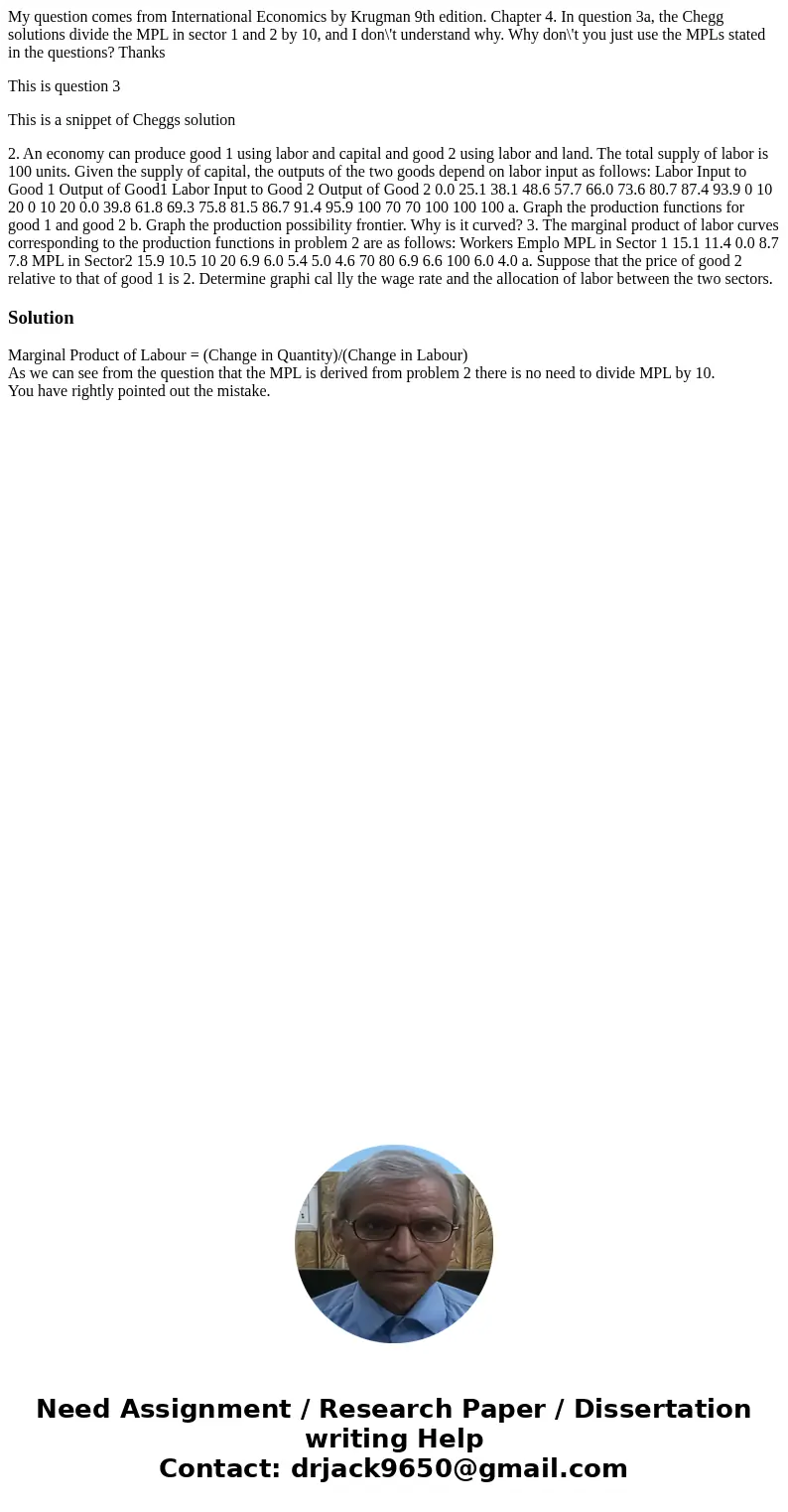My question comes from International Economics by Krugman 9t
My question comes from International Economics by Krugman 9th edition. Chapter 4. In question 3a, the Chegg solutions divide the MPL in sector 1 and 2 by 10, and I don\'t understand why. Why don\'t you just use the MPLs stated in the questions? Thanks
This is question 3
This is a snippet of Cheggs solution
2. An economy can produce good 1 using labor and capital and good 2 using labor and land. The total supply of labor is 100 units. Given the supply of capital, the outputs of the two goods depend on labor input as follows: Labor Input to Good 1 Output of Good1 Labor Input to Good 2 Output of Good 2 0.0 25.1 38.1 48.6 57.7 66.0 73.6 80.7 87.4 93.9 0 10 20 0 10 20 0.0 39.8 61.8 69.3 75.8 81.5 86.7 91.4 95.9 100 70 70 100 100 100 a. Graph the production functions for good 1 and good 2 b. Graph the production possibility frontier. Why is it curved? 3. The marginal product of labor curves corresponding to the production functions in problem 2 are as follows: Workers Emplo MPL in Sector 1 15.1 11.4 0.0 8.7 7.8 MPL in Sector2 15.9 10.5 10 20 6.9 6.0 5.4 5.0 4.6 70 80 6.9 6.6 100 6.0 4.0 a. Suppose that the price of good 2 relative to that of good 1 is 2. Determine graphi cal lly the wage rate and the allocation of labor between the two sectors.Solution
Marginal Product of Labour = (Change in Quantity)/(Change in Labour)
As we can see from the question that the MPL is derived from problem 2 there is no need to divide MPL by 10.
You have rightly pointed out the mistake.

 Homework Sourse
Homework Sourse